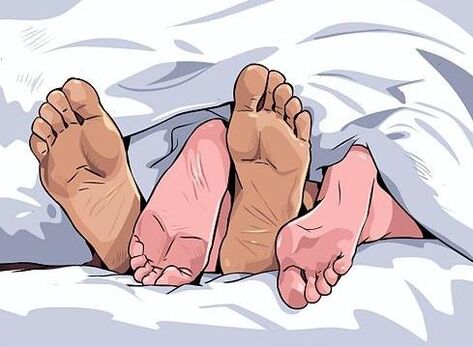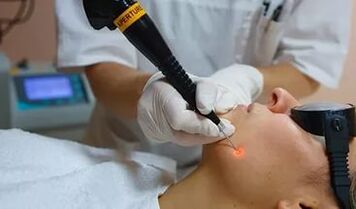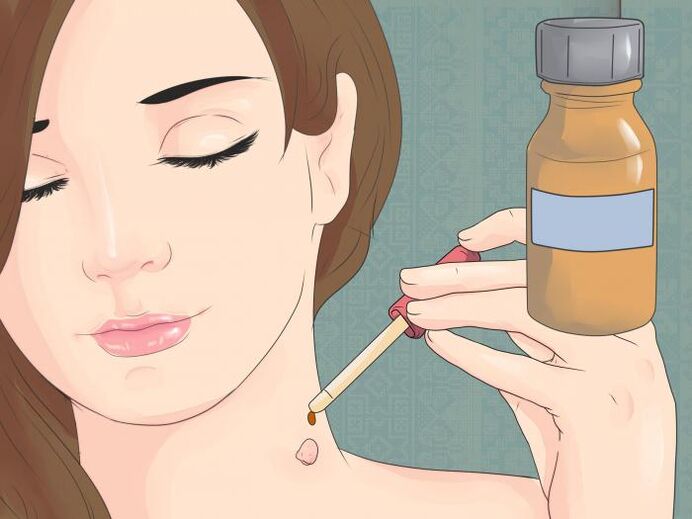HPV is not a scar that can be healed by a single herb, nor is it a serious, life-threatening disease. It's just an infection. This infection has over 100 species, is incredibly contagious, does not recall the age/social status of potential carriers, and is present in over 80% of the population.
Every patient treated for HPV should first understand: what he is dealing with, what the threat of self-treatment is, which doctor he should turn to for help, and how much time/effort/money it will take to completely try to get rid of the disease.
HPV: what is it? Disease symptoms. Is it worth the treatment
Papillomavirus is an infectious disease that affects healthy cells in the epidermis/mucosa of almost the entire body, including the anogenital area. In other words, HPV is an intracellular parasite that inserts its DNA into human chromosomes. As a result, atypical cells begin to form, and under the influence of "favorable" conditions, they multiply rapidly. In the absence of any intervention, most of the epidermis is a layer of pathology, a layer of tumor and pathogenic growth.
However, practice has shown that the consequences of papillomavirus invasion can actually be twofold:
- Infected people become carriers of the virus, but because of the body's defenses, they themselves won't notice any symptoms of the disease.
- Almost immediately, the infected person's body begins to cover the papilloma. Depending on where they are primarily located and the type of virus itself, they may have different shapes/colors, cause itching/pain, or cause absolutely no discomfort.
Therefore, with the existing variants of symptoms, the problem of treating or ignoring papillomavirus resolves itself. However, there is one particular study using the polymerase chain reaction. The results will help determine the type of pathogen, choose the right drug (for a specific strain), and determine if it is being treated.
As for the medical point of view, it is also divided into two halves. Some experts believe that papillomavirus is basically impossible to get rid of. Therefore, it is necessary to monitor symptoms and promptly check for "problem" tumors. The only treatment option for this side is surgery/other definitive treatment. The main indications for this approach are:
- Periodic recurrence of the disease;
- Visible symptoms of the disease, especially of the genitals (genital warts) and mucous membranes (larynx, bronchi, nose, eyes, mouth);
- prepare to become pregnant;
- According to the results of the polymerase chain reaction, the viral load was high.
The rest believed that the virus could be cleared independently from the body. To do this is enough to support his immune system, which will block pathogenic microorganisms. This can be done with the help of vitamin complexes, immune stimulants, a healthy lifestyle (meaning good nutrition/giving up bad habits).
important!This theory applies to patients under the age of 30. After reaching these ages, the immune system is weakened and unable to clear the virus from the body on its own, while dealing with multiple strains of HPV.
Causes of HPV development/progression

Before struggling with how to treat HPV, where can I find a good specialist, how much time/money is needed, is there a cure for papillomavirus in principle, maybe focus on prevention and try not to get infected?
It would be great if the attending physician explained to the patient in advance that this is almost impossible. The reason is simple, everyone around him could be a carrier of the virus and not a single papilloma. Thanks to this, he can say that his immunity has the power to stop the symptoms of the disease. Whether your body's defenses are so strong can only be known after being infected with HPV. This usually happens in three main ways:
- From mother to child.During pregnancy, infection is almost ruled out because the placenta is a reliable barrier to protect the baby from any external influences. But during labor, when the baby passes through the birth canal, the risk of spreading the virus is very high. Also, it first penetrates the mucous membranes of the child's eyes/nose/oropharynx. Therefore, the first papilloma in small patients may appear in the first few days. Particularly dangerous are those located on the glottis, endangering the life of the infant due to possible strangulation. They are also called laryngeal papillomatosis.
- Contact information.This is especially important when personal hygiene rules are not followed, using other people's towels/cups/clothing, shaking hands, kissing, hugging, etc. Increased risk of infection in enclosed spaces with high humidity (swimming pools, saunas, tubs), and in preschool/school institutions.
- self-infection.It has been observed in small children who put everything in their mouths without washing their hands first. The same goes for nail biting habits, as well as burrs on your fingers. In place of the latter, characteristic growths appear in the form of flat patches with pink hues. Don't forget small scratches/abrasion/other mechanical damage to the skin, through which the virus penetrates rapidly into healthy epithelial cells.
In the absence of any action, and concomitant causes of decreased immunity (inflammatory processes, chronic diseases, viruses/colds, lack of vitamins/useful micro and macro elements, living in unfavourable conditions, low environmental levels, poor quality/unbalanced nutrition), papillomatosis spreads rapidly throughout the body, affecting more and more healthy cells. In this case, treatment is unavoidable. All that remains is to choose the fastest and most efficient method.
Papillomavirus Treatment: The Most Effective Approaches
attention!Treatment for HPV should begin with a consultation with a trusted expert! Only after he considers your complaint, conducts tests, and makes an accurate diagnosis, can an effective treatment plan be established. He will answer all your questions, including "Is papilloma curable in principle? " and "Should it be treated? ".
If you don't know who to contact, pay attention to the location of the papillomas that are most inconvenient to you:
- Are the growths "spread" on the arms, legs, underarms and face/neck? Then a dermatologist can help you.
- Worried about genital warts? This papilloma is treated by a gynecologist/urologist.
- Are tumors found near the rectum and anus? Contact a proctologist.
It's worth remembering that setting the goal of "removing HPV from the body" at the outset of treatment is a mistake. No, your symptoms cause some inconvenience and also threaten carcinogenicity. We must start with them to minimize risks to life and health. Usually, a complex method of treating papilloma is used for this:
- Destroy the "problem" papilloma.
- Body support with immunomodulators.
- healthy lifestyle.
Such HPV treatment regimens not only help to get rid of the manifestations of the disease, but also eliminate the virus from the body. But you shouldn't expect its quick removal: if a complete cure is possible, it will take at least a few years.
This is why experts recommend physical methods of removing papillomas as an effective way to stop their growth/spread.
Hardware Cosmetic/Surgery

This method of removing papilloma is considered a priority not only in the medical world, but also in cosmetology. After all, it's the only way to quickly/traceless/effectively remove those papillomas that cause physical discomfort, complexes due to unsightly aesthetic appearance.
The most popular are:
- Laser therapy.The essence of this process is the "lysis" of pathological cells, sealing the vessel wall, and repairing the damaged epithelial layer. The procedure is absolutely painless, quick and very effective (60% to 92% of papillomas disappear without a trace, with no recurrence). However, for wound healing after removal of growths larger than 5 mm, it extended by 4 weeks and left small depigmented spots.
- Radio wave therapy/radiation knife.The method involves the use of high-frequency radio waves to remove skin lesions. Allows you to cure papilloma by coagulating blood vessels without bleeding and pain. Eliminates disease recurrence, works very targeted, without damaging healthy tissue. More suitable for resection of a single tumor.
- Freeze damage.This means exposure to the papilloma with liquid nitrogen, and as a result the growths dry out, turn black and fall off. If they are more than 5-6mm in size, it will take several passes to get the desired effect.
important!The chance of recurrence is very high.
- chemical decomposition.Tumors were removed with trichloroacetic acid. It is only used to treat genital warts. Then the efficiency is 30-40%.
- Electrocoagulation.Papillomas are exposed to high-frequency currents, which cause protein tissue to coagulate, destroying the pathological layer. The procedure is very painful, but local anesthesia is allowed. As for relapses, they are very likely, so you should pay attention to this right away.
attention!Experts performing the procedure must be very careful: the fumes from the coagulation process may contain human papillomavirus particles that, if they enter the upper respiratory tract, could infect him.
- "Good old scalpel".Despite many more modern approaches, surgical intervention still occupies the top spot in medicine. Only now they mainly use it to remove large sized condyloma acuminatum. In addition, this method is also effective in eliminating malignant tumors.
Each of these methods has its own advantages and disadvantages. In addition, patient fear of hardware therapy/surgery often plays an important role. In this case, all of these methods can be categorically rejected, despite their high efficiency. An exception may be carcinogenic formations. But even in this case, patients may stick to other, more "humane" treatments.
Using medicine to remove papilloma

How to remove lesions with medication? Simple. Consult with your doctor, who will prescribe a suitable topical product for you. Regardless of the name and price, the active substance of each of them is an acid or a base, under the influence of which the tissue formed by the epithelium is destroyed. In other words, necrosis of pathological cells occurs.
Self-medication with drugs is prohibited because there are some contraindications that cannot be ignored:
- No pharmacy products are allowed for self-treatment of genital papilloma. Some are theoretically suitable, but should only be used in the treatment room by experienced specialists.
- Sodium tetraborate and sodium hydroxide medications are strictly forbidden to be applied to the face/neck/chest/armpits.
- A good analog of cryodestruction is a spray formulation made with dimethyl ether and propane. It can be used at home, but one must consult a dermatologist and carefully study the accompanying instructions. The tool does work, but the skin surface affected by it heals over a long and painful period.
- A special pencil acts on papillomas with silver nitrate, which helps remove growths with maximum destruction of pathological bacteria. Tumor necrosis has been observed by the end of the first week of use. But you should be prepared for "residual" scars as well as burns. In enclosed areas of the body, it doesn't really matter, but it's best not to experiment on the face/neck/chest.
- The most "mild" drug is a drug, the substance of which is obtained by synthesizing N-N-dimethylamino-2-propanol p-acetaminobenzoate with inosine, because of its antiviral effect. No one will tell you exactly how to remove papilloma with these pills. But the body's defenses, especially the lymphocyte depot in the blood, are significantly strengthened. And with the small spread of papillomatosis, this increases the chances of the virus getting rid of itself.
- A phenolic solution, specialized in the treatment of cutaneous and genital warts, cauterizes its first manifestations. Harmful to healthy skin, do not use more than 5 times.
How to Get Rid of Papilloma Folk Methods

Traditional medicine is loved by many patients, especially those who prefer to self-medicate. It's no surprise that they ask neighbors, grandmothers, and the ancient Internet the question "how to treat HPV. "
This is not to say that this treatment is ineffective. No, many will be able to demonstrate a self-healing disease with the help of decoctions, tinctures and lotions. But there are also people whose folk remedies don't help or just make it worse.
So, before you start using all the collected homemade papilloma recipes, don't forget to consult a specialist and do the necessary checks. Most likely, you'll get a "green light" to use certain methods, or even advice on methods recommended by traditional medicine itself:
| Celandine | Just a few fresh plant stems are enough from which the juices flow. They lubricate the surface of the growth and try not to stick to the healthy epidermis. The process is a little painful, but results can be seen after a few days. |
| iodine | You will need solution (available at any pharmacy) and cotton swabs (for ease of use). HPV is usually treated with iodine, which is considered one of the most effective/cheap treatments. |
| castor oil | Contains acids that can destroy pathological papillomavirus cells. Allows treatment of growths on the face. It is enough to lubricate the wart with castor oil and seal it with a plaster twice a day. |
| garlic | Any old man will tell you how to treat papilloma with garlic. And it's not an option, as you can use chopped garlic cloves for growing or to prepare "garlic ointment". |
| dandelion | The head of the plant is harvested, filled with cologne and infused. The resulting papilloma mixture is processed 6-7 times per day. |
Each suggested option has a right to life. And he showed that, often to get rid of HPV, it is not necessary to schedule treatment years in advance.























